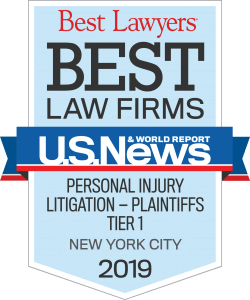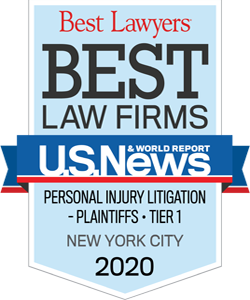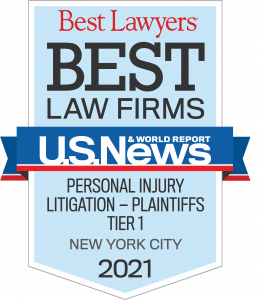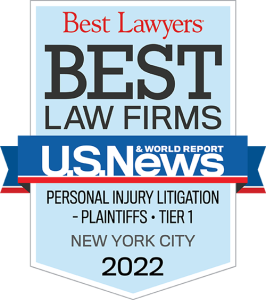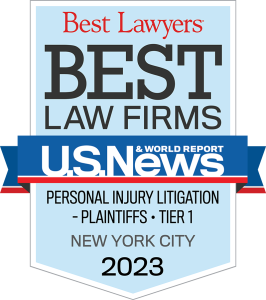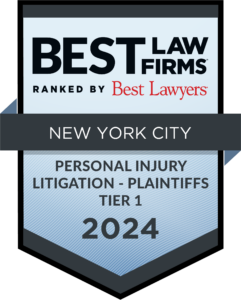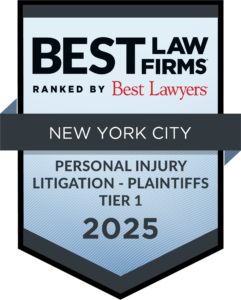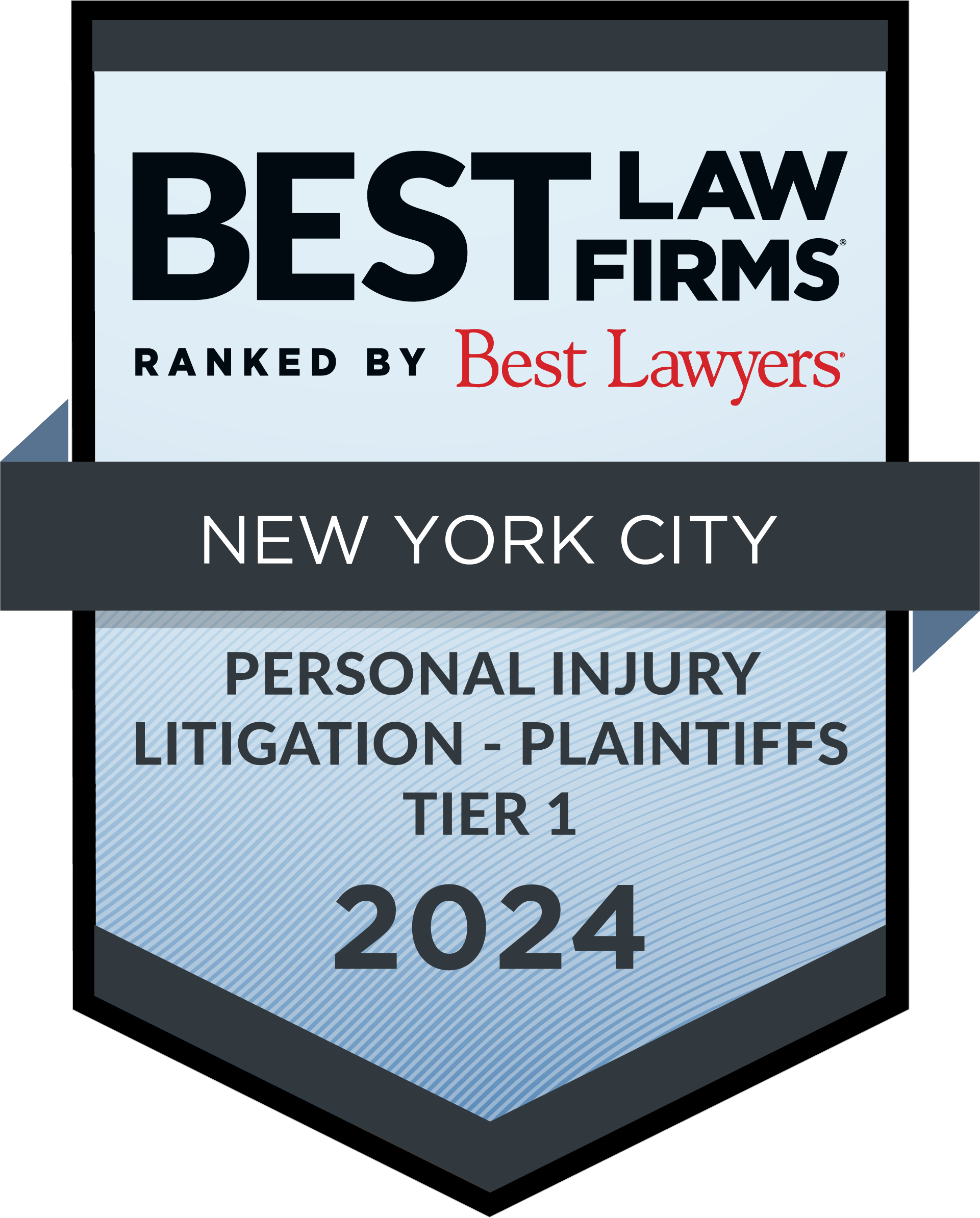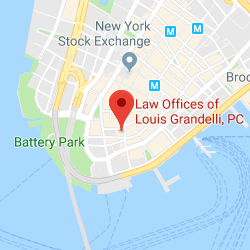
New York construction accident cases are governed by a complex framework of statutes designed to protect workers in one of the nation’s most dangerous industries. With over 250,000 construction workers navigating hazardous conditions daily across the five boroughs, understanding the legal protections available is essential for both workers and employers. As experienced personal injury attorneys serving Staten Island and Manhattan, we regularly witness how Labor Laws 200 and 240 fundamentally shape construction liability claims throughout New York State.
Many construction companies only discover the significance of these regulations after a catastrophic accident occurs. For injured workers and their families, understanding these protections isn’t merely academic—it can mean the difference between receiving just compensation or facing devastating financial consequences alone.
The Foundation: Labor Law 200
Labor Law 200 constitutes New York’s cornerstone workplace safety provision, codifying the common law duty to provide workers with reasonably safe working conditions. This statute creates substantial obligations for property owners, general contractors, and subcontractors operating within the state’s construction industry.
The statute establishes two distinct categories of liability:
- Hazardous Premises Conditions: When the physical workplace itself presents dangers—such as inadequate lighting, unstable flooring, or exposed electrical hazards—the controlling entity with notice of the dangerous condition bears responsibility. As a personal injury attorney in Staten Island, we regularly see cases where property owners failed to address known hazards.
- Unsafe Work Practices and Equipment: When injuries result from hazardous methods or faulty equipment, liability typically falls on the party directing and controlling the work operations.
A crucial element many defendants overlook is the notice requirement. Property owners and contractors face liability under Labor Law 200 when they either created the dangerous condition, had actual knowledge of it, or should have known about it through reasonable diligence. This creates an affirmative duty to inspect and remedy hazards—a responsibility requiring systematic documentation and oversight.
The Gravity of Labor Law 240: New York’s “Scaffold Law”
Labor Law 240, commonly known as the “Scaffold Law,” addresses the exceptional dangers of gravity-related accidents in New York construction sites. This powerful statute specifically protects workers from elevation-related hazards—both falls from heights and injuries caused by falling objects.
What distinguishes this law is its strict liability standard. Unlike conventional negligence claims, Labor Law 240 holds owners and contractors absolutely liable when safety violations lead to gravity-related injuries. Even if a worker was partially at fault, the responsible parties cannot escape liability if proper protections weren’t provided—a concept known as “non-delegable duty” under New York jurisprudence.
The law mandates proper protection against gravity-related risks, including:
- Scaffolds, ladders, hoists, stays, and slings must be constructed, placed, and operated to provide proper protection
- Safety devices must be appropriate for the specific task and capable of supporting the necessary weight
- Equipment must be adequately secured to prevent movement or collapse
- Workers must receive proper training on equipment use and elevation-related hazards
As any Staten Island construction accident lawyer will attest, many contractors mistakenly believe that providing any safety equipment satisfies the law. In reality, the protection must be proper for the specific work being performed. Providing a six-foot ladder for an eight-foot job creates liability, even if the worker chooses to stand on the top rung or otherwise misuses the inadequate equipment.
When These Laws Apply to New York Construction Accidents
The application of these statutes depends on several factors that frequently confuse even experienced contractors. Labor Law 200 applies broadly to all construction, demolition, and excavation work, creating a universal duty to maintain safe working environments across New York worksites.
Labor Law 240, however, has more specific triggers. It applies to particular activities involving height differentials:
- The erection, demolition, repairing, altering, painting, cleaning, or pointing of a building or structure
- The statute protects workers engaged in these activities when they face elevation-related risks
Not every construction worker receives protection under Labor Law 240. The work must involve building structures, and certain activities like routine maintenance may fall outside its scope. New York courts analyze whether the work involves making significant physical changes to a structure versus simple maintenance.
The distinction often hinges on whether the work is part of a larger construction project or stands alone as routine upkeep. Replacing a light bulb typically falls outside Labor Law 240’s protection, while replacing light fixtures as part of a renovation would likely qualify for strict liability protection.
Documentation: Essential Protection Against Liability
Given the strict liability standard of Labor Law 240 and the notice requirements of Labor Law 200, comprehensive documentation becomes the most powerful defense for property owners and contractors. A skilled personal injury lawyer in Manhattan will immediately request these records when representing an injured worker.
Effective documentation practices should include:
- Safety training records detailing specific instruction on equipment, signed acknowledgments from workers, and regular refresher courses
- Daily job site inspection logs documenting conditions, identified hazards, and remediation efforts
- Equipment maintenance records showing regular inspection and repair of scaffolding, ladders, and other elevation-related safety equipment
- Incident reports for all accidents and near-misses, creating a record of response and prevention measures
- Photographic evidence of safety measures implemented at various project stages
Digital documentation offers significant advantages over paper records in construction accident cases. Cloud-based systems ensure records remain accessible even years after project completion—crucial given New York’s extended statute of limitations for construction accidents. Digital date-stamping prevents questions about when inspections occurred, and centralized access ensures critical safety information doesn’t disappear when employees leave.
Common Pitfalls in Labor Law Compliance
Through our work with construction industry clients throughout New York, we’ve identified several recurring compliance issues:
- Inadequate height protection remains the most common Labor Law 240 violation. Providing standard equipment without assessing its appropriateness for specific tasks creates liability. A common example involves using A-frame ladders for tasks requiring more stable elevated platforms.
- Delegation without oversight creates Labor Law 200 exposure. Many general contractors correctly delegate safety responsibilities to subcontractors but fail to implement verification systems. Without documented oversight, courts often find generals retained sufficient supervisory control to impose liability.
- Inconsistent enforcement undermines compliance programs. Companies that establish safety rules but fail to consistently enforce them face increased liability when injuries occur. Sporadic enforcement suggests the company recognizes the importance of the rule but negligently fails to ensure compliance.
- Reactive rather than proactive safety cultures. Companies that respond only after incidents occur rather than systematically identifying and addressing risks face higher liability exposure and insurance costs.
The Real Cost of Non-Compliance in New York Construction Accidents
The financial implications of Labor Law violations extend far beyond direct injury compensation. Settlements and judgments in New York construction accident cases regularly reach seven and occasionally eight figures. In recent years, a Labor Law 240 case resulted in a $15.2 million verdict after a worker fell from inadequate scaffolding.
These costs multiply through:
- Insurance premium increases that persist for years after incidents
- Project delays and productivity losses during investigations and litigation
- Reputation damage affecting future contract opportunities
- Potential criminal liability for egregious safety violations
Perhaps most significantly, Labor Law violations can trigger exclusions in liability insurance policies, leaving companies to face these enormous costs without coverage. Many insurance policies exclude coverage for injuries resulting from known code violations or willful disregard of safety requirements.
Building a Comprehensive Compliance Strategy
Effective Labor Law compliance requires an integrated approach combining legal understanding, operational implementation, and thorough documentation. We recommend developing a comprehensive strategy that includes:
- Regular legal compliance reviews, examining both current practices and planned projects through the lens of Labor Laws 200 and 240
- Integrated safety training programs that specifically address gravity-related risks and proper equipment selection
- Project-specific safety plans that identify elevation hazards particular to each job site
- Digital documentation systems that create real-time records of compliance efforts, accessible across the organization
- Clear chains of responsibility that establish who monitors safety compliance at each level
Most importantly, companies need to foster a culture where workers feel empowered to report unsafe conditions without fear of retaliation. Some of the most severe accidents occur when workers feel pressured to complete tasks despite inadequate safety equipment.
Taking the Next Steps After a New York Construction Accident
If you’ve been injured in a construction accident, consulting a qualified personal injury attorney in Staten Island or Manhattan is essential to protect your rights. The strict liability provisions of New York’s Labor Laws provide powerful protections, but navigating these claims requires specialized legal knowledge.
For construction companies, implementing effective Labor Law compliance doesn’t happen overnight. We recommend a phased approach:
- Start with a comprehensive audit of current safety practices, documentation systems, and training programs
- Identify gaps between current practices and legal requirements, prioritizing high-risk areas like scaffolding and elevated work
- Implement digital documentation systems that create consistent records while reducing administrative burden
- Develop role-specific training that helps workers and supervisors understand their responsibilities under these laws
The investment in proper compliance ultimately delivers returns through reduced accidents, lower insurance costs, and protection from catastrophic liability. More importantly, it ensures workers return home safely each day—the true measure of construction project success.
New York’s Labor Laws create powerful worker protections and significant contractor obligations. By understanding these requirements and implementing appropriate compliance systems, construction companies can navigate these complex regulations while protecting both their workers and their business interests. For injured workers, consulting an experienced Staten Island construction accident lawyer can help ensure you receive the full compensation to which you’re entitled under these powerful protective statutes.
Frequently Asked Questions
What is the statute of limitations for filing a New York construction accident claim?
The statute of limitations for construction accident claims in New York is generally three years from the date of injury. For claims against municipal entities, a Notice of Claim must be filed within 90 days of the accident.
Does Labor Law 240 apply to all construction workers in New York?
Labor Law 240 applies specifically to workers engaged in erection, demolition, repair, alteration, painting, cleaning, or pointing of buildings or structures. Workers performing routine maintenance or those not working at elevations may not qualify for Labor Law 240 protections.
Can I still recover damages if I was partially at fault for my construction accident?
Can I still recover damages if I was partially at fault for my construction accident?

